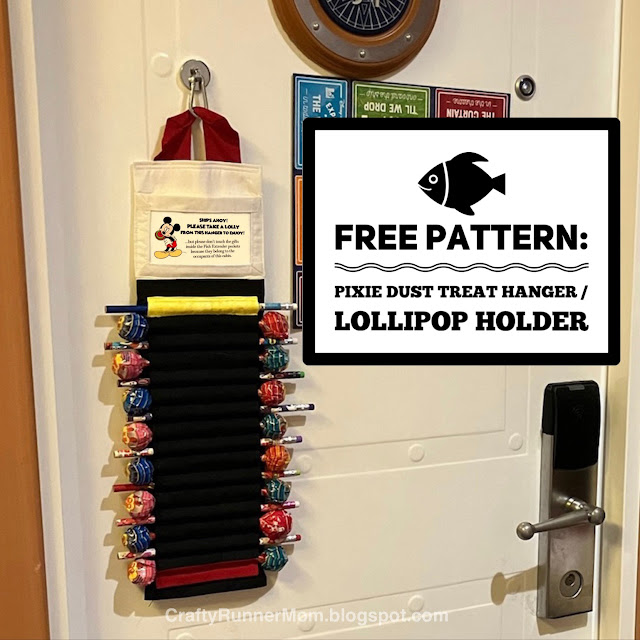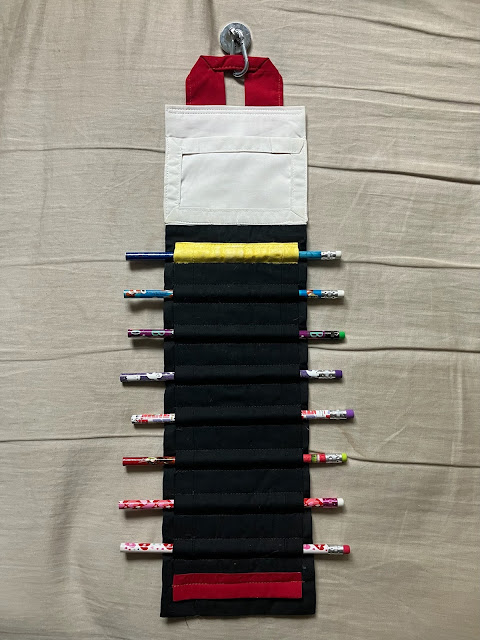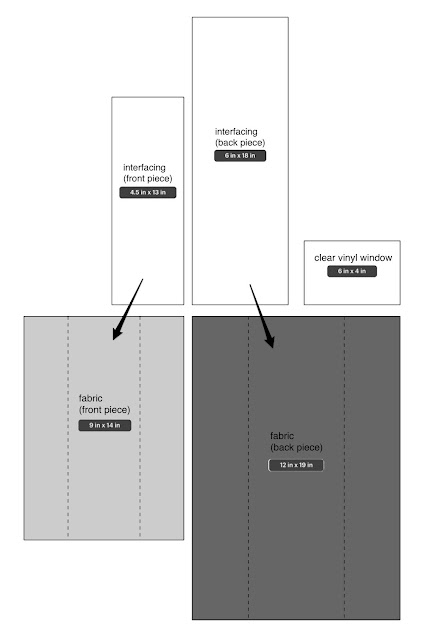Elora Danan’s Green Hooded Wrapped Shawl Scarf from the “Willow” Disney+ TV Series: FREE KNITTING PATTERN
by CraftyRunnerMom
Abbreviations
sts = stitches
BO = bind off
CO = cast on
M1K = make 1 stitch knit-wise
M1P = make 1 stitch purl-wise
PM = place marker
K2tog = knit 2 stitches together decrease
P2tog = purl 2 stitches together decrease
MATERIALS:
*** Your individual yardage may vary depending on your scarf length and torso size. You can use this Yardage Calculator and the gauge below to calculate your estimated yardage.
GAUGE:
24 sts of 1:1 rib = 10 cm fabric = 68.5 cm yarn
26 sts of 2:2 rib = 10 cm fabric = 75 cm yarn
38 sts of 1:1 rib = 16 cm fabric = scarf section width
76 sts in 2:2 rib = 26.25 cm fabric = torso section width
MEASUREMENTS GUIDE:
- Distance between shoulder to ankle (or wherever you want the scarf to end). Subtract 30 cm from that distance to equal the SCARF LENGTH. (NOTE: 30 cm is the length of the transition section where the 1:1 rib increases into 2:2 rib).
- Circumference of upper arm from armpit to shoulder. That circumference will be used to calculate two numbers. ARM HOLE TOP LENGTH = 1/3 x circumference. ARM HOLE BOTTOM LENGTH = 2/3 x circumference.
- Circumference around torso underneath breasts. (If you want your garment to fit tighter, subtract a few inches/cm to provide negative ease.) Divide this circumference in half to equal the TORSO FRONT LENGTH.
- TORSO BACK LENGTH = TORSO FRONT LENGTH minus ARM HOLE BOTTOM LENGTH.
- Distance from outer corner of left shoulder to top of head to outer corner of right shoulder. This is the HOOD LENGTH. (Depending upon how much drape you want the hood opening to have, you can make this longer or shorter).
UPDATED 2/25/2023:
I really wanted this pattern to be size inclusive, so that’s why it’s been challenging to come up with a “one size fits all” formula.
If you find that the above formulas make the torso back section too short, here are a few alterations to the pattern that you can make:
- The garment arm hole has a lot of stretch, so make sure that when you measure your arm circumference you pull the measuring tape snug. If this doesn’t work, you can try any or all the following 3 alteration options.
- Multiply your real arm circumference by 0.75 and use that new number as the new arm circumference. This will create negative ease.
- Switch to the following new formulas to calculate the arm hole top and bottom lengths: ARM HOLE TOP LENGTH = 2/5 x arm circumference.
ARM HOLE BOTTOM LENGTH = 3/5 x arm circumference. The downside to this alteration is that the shoulders may be more droopy. - Use the following new formula to calculate the torso back: TORSO BACK LENGTH = 1/2 x TORSO FRONT LENGTH. This is probably the easiest alteration. The only downside is that the ends of the scarf section may hang a little longer on the finished garment.
PATTERN:
- FIRST SHOULDER SCARF: CO 38 sts in 1:1 rib pattern, turn.
- * K1 P1, repeat from * until end of row, turn.
- Repeat Step 2 until reach SCARF LENGTH (see measurements guide above).
- INCREASE ROW: (K1 P1 K1 P1 K1 P1 M1K) x 3 times, K1 P1, (M1K K1 P1 K1 P1 K1 P1) x 3 times, turn.
- (K1 P1 K1 P1 K1 P2) x 3 times, K1, (P2 K1 P1 K1 P1 K1) x 3 times, P1, turn.
- K1, (P1 K1 P1 K1 P1 K2) x 3 times, P1, (K2 P1 K1 P1 K1 P1) x 3 times, turn.
- Repeat Steps 5-6 for the next 6 rows.
- INCREASE ROW: (K1 P1 K1 P1 K1 M1K P2) x 3 times, K1, (P2 M1K K1 P1 K1 P1 K1) x 3 times, P1, turn.
- K1, (P1 K1 P1 K1 P2 K2) x 3 times, P1, (K2 P2 K1 P1 K1 P1) x 3 times, turn.
- (K1 P1 K1 P1 K2 P2) x 3 times, K1, (P2 K2 P1 K1 P1 K1) x 3 times, P1, turn.
- Repeat Steps 9-10 for the next 6 rows.
- INCREASE ROW: K1, (M1P P1 K1 P1 K1 P2 K2) x 3 times, M1P P1, (K2 P2 K1 P1 K1 M1P P1) x 3 times, turn.
- (K2 P1 K1 P1 K2 P2 ) x 3 times, K2, (P2 K2 P1 K1 P1 K2) x 3 times, P1, turn.
- K1, (P2 K1 P1 K1 P2 K2) x 3 times, P2, (K2 P2 K1 P1 K1 P2) x 3 times, turn.
- Repeat Steps 13-14 for the next 6 rows.
- INCREASE ROW: (K2 P1 M1P K1 P1 K2 P2) x 3 times, K2, (P2 K2 P1 K1 M1P P1 K2) x 3 times, P1, turn.
- K1, (P2 K2 P1 K1 P2 K2) x 3 times, P2, (K2 P2 K1 P1 K2 P2) x 3 times, turn.
- (K2 P2 K1 P1 K2 P2) x 3 times, K2, (P2 K2 P1 K1 P2 K2) x 3 times, P1, turn.
- Repeat Steps 17-18 for the next 6 rows.
- INCREASE ROW: K1 M1K, (P2 K2 P1 M1K K1 P2 K2) x 3 times, P2, (K2 P2 K1 M1K P1 K2 P2) x 3 times, turn.
- (K2 P2 K1 P2 K2 P2) x 3 times, K2, (P2 K2 P2 K1 P2 K2) x 3 times, P2, turn.
- K2, (P2 K2 P1 K2 P2 K2) x 3 times, P2, (K2 P2 K2 P1 K2 P2) x 3 times, turn.
- Repeat Steps 21-22 for the next 6 rows.
- INCREASE ROW: (K2 P2 K1 M1K P2 K2 P2) x 3 times, K2, (P2 K2 P2 M1K K1 P2 K2) x 3 times, P2, turn.
- FIRST TORSO FRONT: * K2 P2, repeat from * until end of row, turn.
- Repeat Step 25 until reach TORSO FRONT LENGTH. PM on the final st to indicate that this edge is the “neck border” of the fabric.
- FIRST ARM HOLE: K2 P2 rib for 28 sts, PM on 29th st and place that st and the remaining sts of the row on hold, turn. There should be 48 sts on hold.
- TOP SECTION OF ARM HOLE: K2 P2 rib for 28 sts, turn.
- Repeat Step 28 until reach ARM HOLE TOP LENGTH. Make note of how many rows were needed. Then place these 28 sts on hold.
- BOTTOM SECTION OF ARM HOLE: Using a new strand of yarn & beginning with the marked hold st from Step 27: K2 P2 rib for 48 sts, turn.
- Repeat K2 P2 rib rows until reach the ARM HOLE BOTTOM LENGTH, turn.
- REJOINING ROW: K2 P2 rib for 76 sts, thus closing the arm hole. Turn.
- TORSO BACK: If the final st of Step 32 is on the “neck border” of the fabric (as marked in Step 26), K2 P2 rib for 76 sts, turn. If the final st of Step 32 is on the opposite border of the “neck border” of the fabric, SKIP to Step 34.
- SHORT ROW: K2 P2 rib for 58 sts, place the remaining 18 sts on hold, turn.
- Slip 1st st purlwise, P1, K2 P2 rib to end of row, turn.
- For the next 4 rows: K2 P2 rib for 76 sts, turn.
- SHORT ROW: K2 P2 rib for 64 sts, place the remaining 12 sts on hold, turn.
- Slip 1st st knitwise, K1, P2, then K2 P2 rib to end of row, turn.
- For the next 4 rows: K2 P2 rib for 76 sts, turn.
- Repeat Steps 34-39 until the “waist border” reaches the length that’s the TORSO BACK LENGTH. Because of the short rows in Steps 34 & 37, the “neck border” will be shorter than the “waist border”.
- If the final st of Step 40 is on the “neck border” of the fabric (as marked in Step 26), SKIP to Step 42. If the final st is either in the middle of the fabric or on the “waist border” of the fabric, K2 P2 rib to the end of the row until the final st is on the “neck border, turn.
- SECOND ARM HOLE: Repeat Steps 27-32 to make the SECOND ARM HOLE.
- SECOND TORSO FRONT: * K2 P2, repeat from * until end of row, turn.
- Repeat Step 43 until reach same number of rows as Step 26.
- SECOND SHOULDER SCARF: DECREASE ROW: (K2 P2 K2tog P2 K2 P2) x 3 times, K2, (P2 K2 P2 K2tog P2 K2) x 3 times, P2, turn.
- K2, (P2 K2 P1 K2 P2 K2) x 3 times, P2, (K2 P2 K2 P1 K2 P2) x 3 times, turn.
- (K2 P2 K1 P2 K2 P2) x 3 times, K2, (P2 K2 P2 K1 P2 K2) x 3 times, P2, turn.
- Repeat Steps 46-47 for the next 6 rows.
- DECREASE ROW: K2tog, (P2 K2 P1 K2tog P2 K2) x 3 times, P2, (K2 P2 K2tog P1 K2 P2) x 3 times, turn.
- (K2 P2 K1 P1 K2 P2) x 3 times, K2, (P2 K2 P1 K1 P2 K2) x 3 times, P1, turn.
- K1, (P2 K2 P1 K1 P2 K2) x 3 times, P2, (K2 P2 K1 P1 K2 P2) x 3 times, turn.
- Repeat Steps 51-52 for the next 6 rows.
- DECREASE ROW: (K2 P2tog K1 P1 K2 P2) x 3 times, K2, (P2 K2 P1 K1 P2tog K2) x 3 times, P1, turn.
- K1, (P2 K1 P1 K1 P2 K2) x 3 times, P2, (K2 P2 K1 P1 K1 P2) x 3 times, turn.
- (K2 P1 K1 P1 K2 P2 ) x 3 times, K2, (P2 K2 P1 K1 P1 K2) x 3 times, P1, turn.
- Repeat Steps 54-55 for the next 6 rows.
- DECREASE ROW: K1, (P2tog K1 P1 K1 P2 K2) x 3 times, P2tog, (K2 P2 K1 P1 K1 P2tog) x 3 times, turn.
- (K1 P1 K1 P1 K2 P2) x 3 times, K1, (P2 K2 P1 K1 P1 K1) x 3 times, P1, turn.
- K1, (P1 K1 P1 K1 P2 K2) x 3 times, P1, (K2 P2 K1 P1 K1 P1) x 3 times, turn.
- Repeat Steps 58-59 for the next 6 rows.
- DECREASE ROW: (K1 P1 K1 P1 K2tog P2) x 3 times, K1, (P2 K2tog P1 K1 P1 K1) x 3 times, P1, turn.
- K1, (P1 K1 P1 K1 P1 K2) x 3 times, P1, (K2 P1 K1 P1 K1 P1) x 3 times, turn.
- (K1 P1 K1 P1 K1 P2) x 3 times, K1, (P2 K1 P1 K1 P1 K1) x 3 times, P1, turn.
- Repeat Steps 62-63 for the next 6 rows.
- DECREASE ROW: K1, (P1 K1 P1 K1 P1 K2tog) x 3 times, P1, (K2tog P1 K1 P1 K1 P1) x 3 times, turn.
- * K1 P1, repeat from * until end of row, turn.
- Repeat Step 66 until reach same number of rows as Step 3.
- BO 38 sts in 1:1 rib pattern.
- HOOD: CO 56 sts in 2:2 rib pattern. Turn.
- * K2 P2, repeat from * until end of row, turn.
- Repeat Step 70 until reach HOOD LENGTH.
- BO 56 sts in 2:2 rib pattern.
- Fold hood in half, then stitch together the back seam of hood.
- ASSEMBLING THE GARMENT: PM on the center back of the neckline (see the illustrated schematic for reference).
- Align the center of the hood with center neckline.
- Stitch hood to the back of the torso section.
- Weave in yarn tails.
HOW TO WEAR THE GARMENT:
- Place both arms into the garment similar to putting on a sweater.
- Wrap the left scarf section across the front of your torso, draped above your right shoulder (pull it snug so that the decrease row rests behind your right shoulder), and thru the armhole.
- Then drape the right scarf portion over the front of your torso and over your left shoulder (pull it snug so that the decrease row rests behind your left shoulder).










